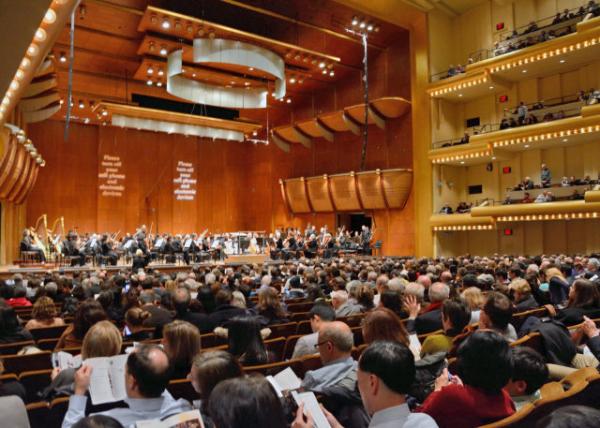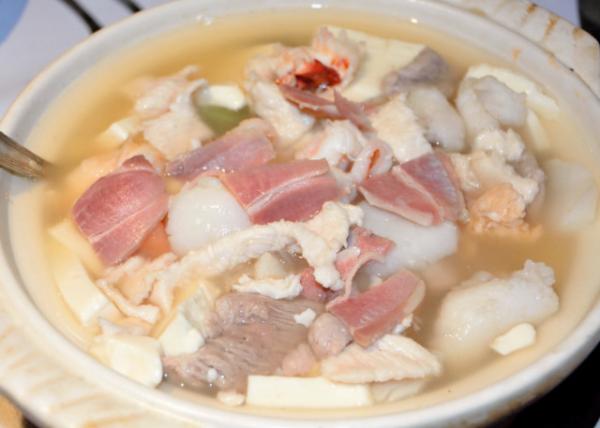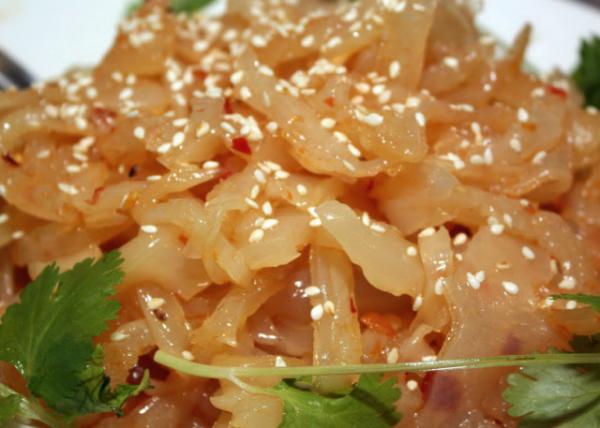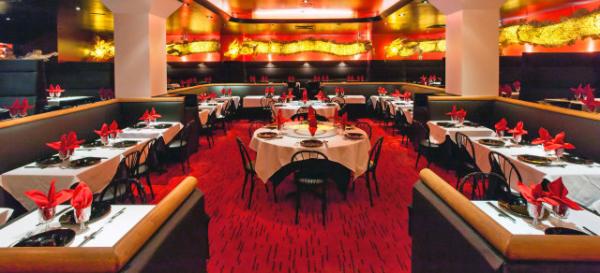| Silk Road Ensemble w/ Yo-Yo Ma(馬友友絲綢之路民樂隊) |
| 送交者: 天邊的紅霞 2020年04月19日09:37:10 於 [五 味 齋] 發送悄悄話 |
|
2015-02-21
【Aiden in English】 For as long as writing was invented, the East and West have been divided. Both became rivals, separated at war. They had huge differenced in ideals and music. So as our final treat of the night, mom bought the tickets to a concert of Sacred and Transcendent led by the Cellist Yo-Yo Ma’s Silk Road Ensemble and debuted with the New York Philharmonic Orchestra (NYPO) for Chinese New Year in Lincoln Center for the Performing Arts. It is well-known that the music of the East and West are largely different. For example, a scale in the East would only contain 5 notes or the pentatonic, while a scale in the West would have at the least 7 notes or the diatonic. Now what would happen if they came together? Would it be catastrophic or beautifully organized harmony? Mom led us across a huge road on Columbus Ave & Broadway outside of the Shun Lee Chinese restaurant, and we plopped in front of the Lincoln Center. By now, it was flurrying snow, and the ground was all slushy from cars driving by in Midtown Manhattan. We went inside and roamed around Avery Fisher Hall, home of the NYPO until the concert time. This concert was all about bringing the Eastern and Western music together. The four of us would experience how the prestigious musicians performed the traditional music for thousands of years. As Confucius said, to educate somebody, you should start with poems, emphasize ceremonies, and finish with music. Performers walked on stage to their seats and warmed their instruments up. I saw a clarinet, a pipa or lute, drums, a trumpet, an accordion, a dulcimer, and a few of other string instruments. All of a sudden, they all shushed and a sound burst from somewhere in the audience. It was a gaita, loud and clear. There walking down the aisle was a woman holding an enormous gaita. The sound was very piercing like a whistle, but had a pitch to it. Then across the room, another instrument played. Mom told me that it was a suona. At first, I thought was a flute. After taking a closer look, it seemed more like a mini trumpet, silver and the size of my hand. It sounded extremely high and slightly made my head hurt. The gaita and the suona traded solos for Fanfare of Gaita, Suona, and Brass as both players slowly walked toward the stage. They were greeted by an all out explosion of sound from the other instruments. It seemed chaotic, loud and uncontrollable. The pipa strung as if there was no tomorrow. The clarinet player’s face turned a shade of red and purple from the lack of air that I didn’t even know. The song then gave each instrument a time to shine, passing along the solos to each instrument. Some of instruments like the clarinet were able to play loudly while others, like the pipa, seemed really quiet all by itself. As the live show went on, Yo-Yo Ma led the group to play the repertoire of the Silk Road Suite and Selections from Sacred Signs: Concerto for 13 Musicians. After the intermission, on came the NYPO with Death and Transfiguration, Op. 24 by R. Strauss. Yo-Yo Ma appeared first, and then followed by the conductor Alan Gilbert. When they played the last piece of Rose of the Winds by Osvaldo Golijov, the East and West in my mind differentiated even more. The West had order, and every single note they played sounded controlled. The conductor was in total a command of everything, and each player needed to contribute a certain amount to make the song sound beautiful. Yet, after witnessing such performance, the East sounded too uneventful. The louds and softs were there, but too… unextreme. I believed that when there were two extremes, the best solution was the median, for example, sweet and sour, hot and cold, chaotic and uneventful. So for the second part of the show, on came the first and second group. As they played, the first group stood out. The people in the NYPO had no expression in their movements, while the others were swaying like drunken ducks. But they had to hold back from drowning out the orchestra. The NYPO faded into the background ready to play when they were requested. The first group also could be hushed when necessary. The median had been found. The middle is an important thing, all around the world. So as we left NYC, I learned not only about cultures all over the world, but also a lesson of life. 【紅霞譯文】 有史以來,世界上東西半球一直矛盾重重,雙方各自為政,人們曾不惜訴諸武力激化彼此對立,這種狀況甚至波及到意識形態及其音樂領域,而我們今晚的壓軸戲就 是要鑑賞融合了兩種文化的音樂會──媽媽事先選好的“神聖與超越”,由大提琴家馬友友為首的“絲綢之路民樂隊”聯手紐約愛樂樂團,在紐約林肯演藝中心首次 為慶祝春節舉行同台演出。 眾所周知,東西方音樂存有很大不同,例如:東方民樂中由五個音符(12356即宮商角徵羽)組成五聲音階,而西洋樂則至少由八度音程CDEFGABC組成七聲音階。現在當五聲音階與七聲音階同台獻藝,結果怎樣?是刺耳的配器,還是動聽的和弦? 我們走出“順利園”中餐館,在媽媽的率領下,大家徒步橫穿哥倫布大道與百老匯街交匯處寬廣馬路,浩浩蕩蕩地朝對面林肯中心挺進。此時此刻,雖然北風那個吹雪花這個飄,但曼哈頓中城依然燈火輝煌,飛身駛過的車輛濺起一道道污雪濁水,我們深一腳淺一腳堅定地跋涉在泥濘的道路上,儘快躲進艾弗里•費雪廳──紐約愛樂樂團大本營等候演出開始。該場音樂會集東方多元民族風格及西方古典音樂曲式之大成,讓我們一行四人共同體驗滲透着幾千年傳統文化底蘊的精美音樂,孔夫子也說過:“詩之所至,禮亦至焉,禮之所至,樂亦至焉。” 民樂表演家依次走上舞台各就各位,開始給自己的樂器調音,整個樂隊有單簧管、琵琶、鼓樂、小號、手風琴、揚琴、還有其它弦樂器。突然大家一下子安靜下來, 唯有聲音從觀眾席一側傳來,原來是嘹亮清脆的風笛,只見一位女樂手吹起巨大的風笛,音質宛如口哨一般尖厲高亢,但音色略有不同。這時又有聲音從觀眾席另外 一側傳來,媽媽告訴我叫嗩吶,起先我還誤以為是長笛,仔細一看,發現它很像小號,呈銀白色,跟我巴掌差不多大,它的音調極高,聽起來有點叫我心驚肉跳。風 笛和嗩吶分別領奏引子,隨後其它樂器加入進來一起合奏《風笛嗩吶銅管樂主題曲》,配器上因為着力渲染多樣性,而使旋律顯得熱鬧但缺乏韻致,令人不免心生失控的感覺。琵琶輪指擊弦猛烈,大有雄霸天下只待今朝之勢; 單簧管演員用力猛吹,滿臉漲得紅一塊紫一塊,可能因胸氣不暢所致。每首曲目中,各個樂器都有獨奏機會,有的聲音很大,比如單簧管;有的聲音則很小,比如琵琶。接下來馬友友與民樂隊一起演奏了《絲綢之路組曲》和《聖潔印跡節選:13位音樂家協奏曲》。 中場休息之後,輪到紐約愛樂樂團上場,馬友友與指揮艾倫•吉爾伯特先後登台亮相,為觀眾帶來了德國作曲家理查德•史特勞斯《死與升華•作品第24號》。當 他們與絲綢之路民樂隊合作演奏阿根廷作曲家奧斯瓦爾多•格利約夫《玫瑰之路》時,我清楚地意識到東西方音樂之間的差別。演奏這首交響曲,用西洋七聲音階聽起來比較順耳,每一個音符都富有情感,在指揮的帶領下,各個樂器的特長發揮得盡善盡美。而用東方五聲音階則覺得旋律過於平淡,雖有強弱變化,但因戲劇性不足而缺乏感染力。 不過我相信,當遇到兩個極端時,例如:甜與酸、熱與冷、混亂與平靜,最好的解決辦法就是要找出折中的套路。就拿下半場雙方同台演奏來說,民樂部分應提高表現能力,管弦部分則需收斂一點;民樂出任主角,管弦扮演配角,並隨時做好配合民樂的準備,同時民樂要把握好力度,這樣才會東西合璧。 中庸之道天人合一,其實這是東西方音樂和諧交融的基點。此次紐約之行,我不僅對世界文化有所了解,同時還學到一點處事哲學。
|
|
|
|
|
 |
 |
| 實用資訊 | |
|
|
|
|
| 一周點擊熱帖 | 更多>> |
|
|
|
| 一周回復熱帖 |
|
|
|
|
| 歷史上的今天:回復熱帖 |
| 2019: | 俺又看到了老K的悲慘人生 | |
| 2019: | k19這不學無術的騙子在5味蹭熱蹭得還不 | |
| 2018: | 好麼,帝修反要氣阿我們地脖子,說我們 | |
| 2018: | 國內關於中興事件的內部檢討 | |
| 2017: | 井蛙:電大教程 -- 接受大地是平的再教 | |
| 2017: | 我猜微軟是這樣做的,一個吸屁魷專門運 | |
| 2016: | 5香豆:敦煌-大漠上的一滴傷心淚(1)( | |
| 2016: | 夭夭,牛油果怎麼吃 | |
| 2015: | 紫荊棘鳥:這種白色或淡綠色的梨花實在 | |
| 2015: | 最近特別熱氣,上個我發明的清火湯 | |











